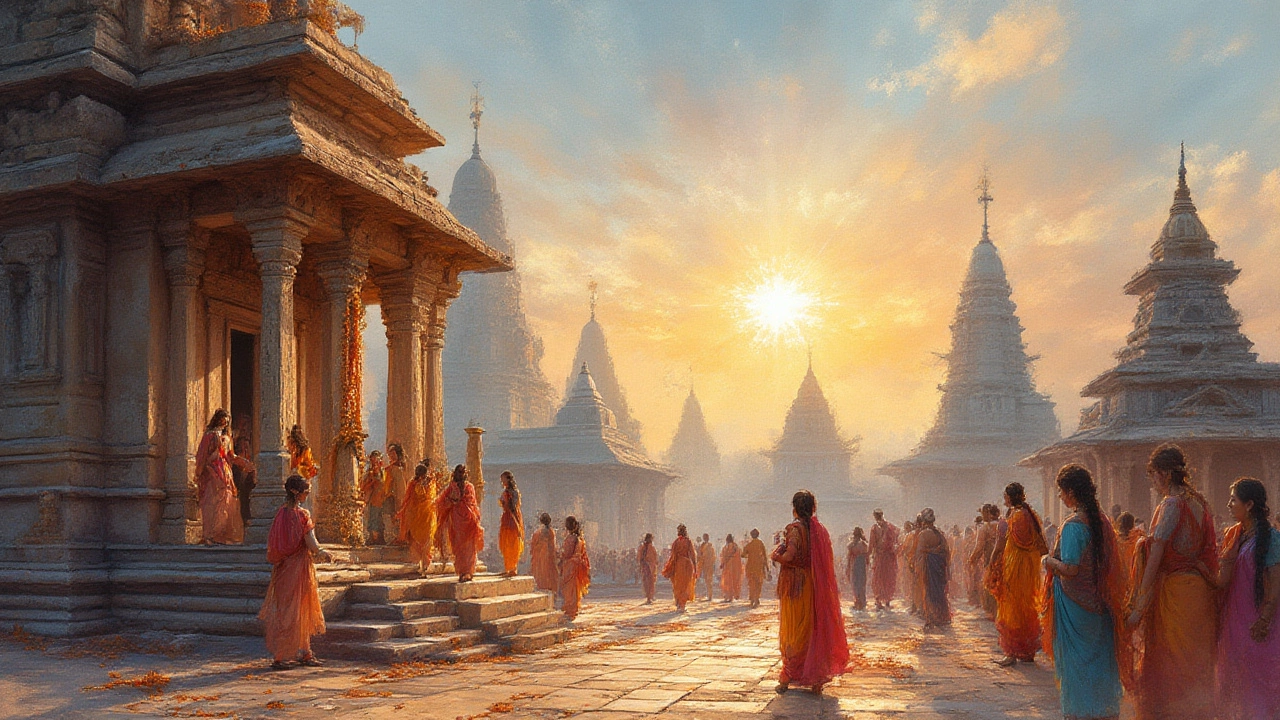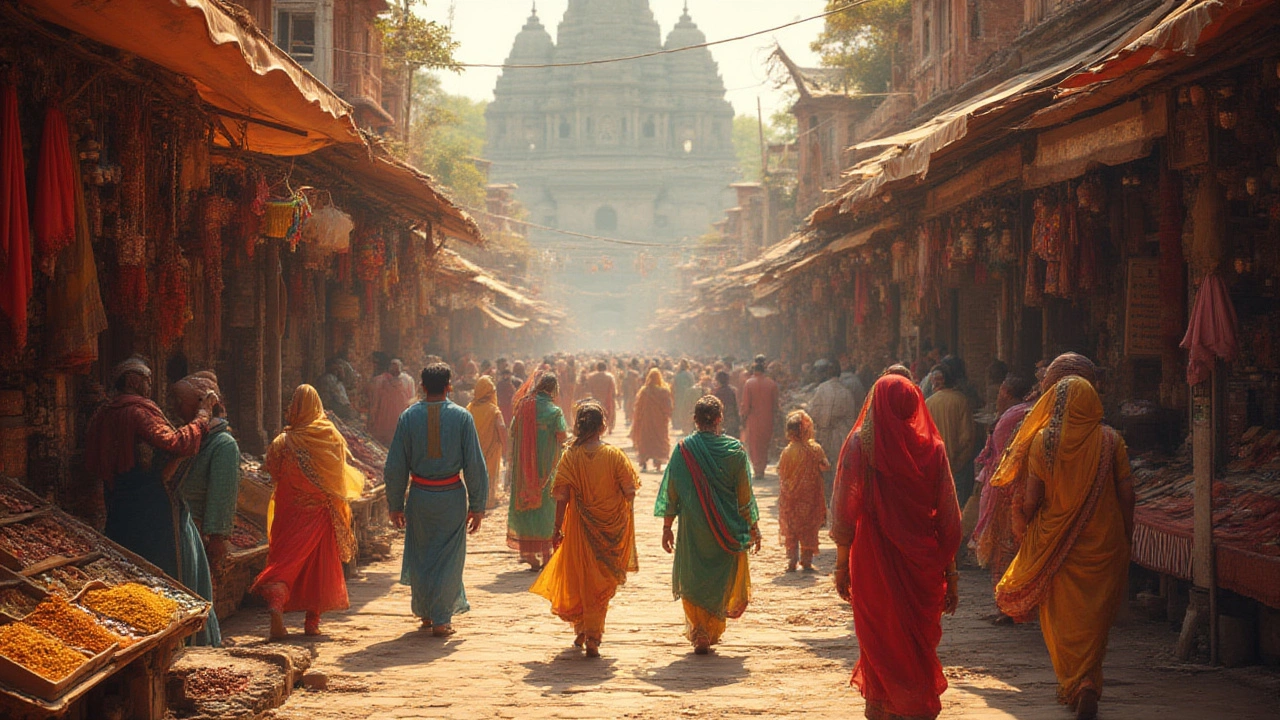Picture this: every corner you turn in India, a new world opens up. Centuries-old mosques erupt into the skyline next to golden gopurams, while spice markets churn with noise, colour, and life. In the midst of all this chaos, you find rituals, food, dance, costumes, and stories—heritage that stretches from the snowy mountains of Ladakh to the tropical shores of Kerala. India doesn't just invite you to visit; it dares you to jump in headfirst. What makes cultural tourism in India so irresistible? Let's peel back the layers.
Historic Sites and World-Class Monuments
No talk about India's cultural attractions is complete without Taj Mahal. But did you know it isn’t India’s most visited historical site? That title actually goes to the Red Fort in Delhi, drawing millions each year. The architecture of Indian monuments is wildly diverse, mirroring the region, religion, and era. There’s the majestic Meenakshi Temple in Madurai, with 14 riotous towers covered in thousands of sculptures. Across the country, the Sun Temple at Konark stuns with its massive stone chariot wheels. Delhi alone packs in Humayun's Tomb, Qutub Minar, and the Lotus Temple—a blend of Mughal, Islamic, and modern design.
The thing is, these sites don’t just look pretty. They each come with a story—love, war, invention, tragedy. Fatehpur Sikri is a deserted city built out of royal whimsy. Hampi holds the crumbling remains of a lost empire amid a giant boulder field. Aurangabad’s Ajanta and Ellora Caves are world-famous for ancient rock-cut Buddhist, Hindu, and Jain sculptures—going back at least 2,000 years. Don’t just stand and take photos: wander at dawn, whisper with caretakers, or join a guided walk for wild stories you wouldn’t expect in the guidebook.
| Monument | Location | Year Built | Annual Visitors (Approx.) |
|---|---|---|---|
| Taj Mahal | Agra | 1632 | 6.5 million |
| Red Fort | Delhi | 1639 | 10 million |
| Meenakshi Temple | Madurai | 1623 | 3 million |
| Ajanta Caves | Aurangabad | 2nd Century BCE | 500,000 |
Here’s a tip: go off-peak whenever possible; crowds drop, and the experience becomes way more personal. Many sites now offer night tours, when monuments light up and storytelling takes a dramatic turn. If you’re up for it, plan your visit during a local festival. Temples and forts burst into life, with processions, dance, and special rituals. Just remember, some days certain sites restrict entry to allow for private worship or state events—always check ahead.
Vibrant Festivals and Living Traditions
Trying to keep up with India’s calendar of festivals is like chasing a tornado—there’s something happening every month. Holi, the Festival of Colours, probably fills your Instagram feed each March with blasts of pink and green powder. But ever heard of Onam in Kerala? It’s a 10-day harvest festival with floral carpets, traditional snake-boat races, elephant processions, and the spectacular Onam Sadya feast—24 dishes on a giant banana leaf. Or, move further north to Kutch in Gujarat for the Rann Utsav. Think white salt flats, moonlit desert camps, folk dances, and kite flying as far as the eye can see.
Every major religion—Hinduism, Islam, Christianity, Sikhism, Buddhism—marks its festivals loud and proud. Diwali (the Festival of Lights) literally transforms cities like Varanasi and Jaipur into a twinkling wonderland. In Amritsar, Sikhs attend the mesmerizing nightly closing ritual at the Golden Temple. Muslim communities invite all to share Eid feasts. Want to see a real spectacle? Head to Pushkar in Rajasthan for the world’s largest camel fair—complete with bearded musicians, henna artists, and mustache competitions.
What makes all these festivals so special isn’t just their colour and chaos—it’s how locals open their homes and hearts to strangers. There’s something unbeatable about being swept up in a Holi dance or watching diyas (oil lamps) drift along the Ganges. Here’s a tip: festivals are fun, but they can get wild, crowded, and loud. Dress modestly, keep an eye on valuables, and if a friendly family invites you to dinner, always say yes. You might even get roped into learning a few steps of Garba (Gujarati folk dance) or cooking up a pot of biryani under the stars.

Art, Theatre, and Handicrafts: The Soul of Indian Creativity
India’s art isn’t just tucked away in museums. Walk through Old Delhi and you’ll breathe in clouds of perfume from hand-rolled incense, watch weavers spin silk sarees in Varanasi, or stumble upon block printers pounding colours on fabric in Jaipur. The country is a living art-gallery. If you want to get seriously wowed, check out the National Museum in Delhi or the Chhatrapati Shivaji Maharaj Vastu Sangrahalaya in Mumbai—each home to centuries-old bronze sculptures, intricate miniature paintings, and rare jewelry.
On the streets, buskers belt out Bollywood hits while Kathakali dancers paint their faces in swirling patterns. Head down to Chennai during the December Music Season and feel the city pulse with Carnatic songs—the air buzzing with talent young and old. Bollywood, of course, runs on its own magic: Mumbai’s local tours let you watch live film sets or peek inside the famous studios of the world’s biggest movie industry.
If you’re a shopper or craft-lover, this is paradise. India is famous for block-printed cottons, brass lamps, sandalwood carvings, woven shawls, rugs, and ceramics. Each region has its own thing: Kashmiri carpets, Lucknow’s chikankari embroidery, Bengal’s terracotta pottery. Handy tip—skip tourist traps and visit government craft emporiums in every major city. The prices are fair, the quality vetted, and your rupees support real artisans.
- Kumbh Mela is the world’s largest religious gathering, drawing more than 50 million pilgrims in one city.
- India’s classical dance forms include Bharatanatyam (Tamil Nadu), Kathak (Uttar Pradesh), and Odissi (Odisha), with roots dating back over 2,000 years.
- Jaipur is a UNESCO World Heritage City for its arts, crafts, and urban planning.
- The Indian Handicrafts industry employs around 7 million people—one of the world’s biggest.
Food, Heritage Walks, and Interactive Experiences
In India, food isn’t just fuel—it’s family, faith, and festivity all rolled into one. Street snacks like pani puri and samosas tempt you from every alley, while a thali (set meal) will introduce you to at least six flavours in one go: sweet, salty, spicy, sour, bitter, and umami. Famous cities have their own dishes: Kolkata’s fish curry, Lucknow’s melt-in-your-mouth kebabs, and Mysore’s dosas. Don’t just settle for restaurants—take a cooking class in someone’s home or join a local food walk for a crash course in spicing, roasting, and marinating.
If you crave more hands-on adventure, join a heritage walk. Cities like Hyderabad, Mumbai, and Pune have fantastic guided tours: think bazaars, back lanes, old temples, hidden synagogues, and forgotten palaces all stitched together with stories from locals. These walks get you off the tourist track, right into people’s lives—sometimes, you end up drinking chai with a poet, or attending a tiny performance in a centuries-old haveli (mansion).
India’s cultural scene is never static. In the last decade, cities like Bengaluru and Ahmedabad have exploded with new art galleries, organic farms, and fusion food markets. Interactive museums—like the Partition Museum in Amritsar or the Indian Music Experience in Bengaluru—use VR and soundscapes to make history come alive. Festivals like the Jaipur Literature Festival or the Kochi-Muziris Biennale (Asia’s largest art fair) draw writers, thinkers, and artists from around the world. Tickets are easy to grab online, and many events are free to attend if you register early.
Craving something concrete for your trip? Here’s a quick checklist for cultural immersion:
- Take a dawn boat ride in Varanasi to watch the Ganga Aarti
- Learn a Bollywood dance routine in Mumbai
- Shop at the Dilli Haat artisanal market in Delhi for unique souvenirs
- Watch a classic Kathakali performance in Kerala
- Eat a street food breakfast in Old Hyderabad or Pune
- Join a festival procession if you’re visiting during Holi, Diwali, Pongal, or Eid
India’s cultural attractions aren’t just for ticking boxes on your travel list—they’re fiercely alive, changing with every sunrise. Your strongest memories won’t be the sights you expected, but the stories, smells, and sounds you stumble into. Talk to people. Ask, listen, taste, dance. Come for the palaces or temples, but stay for the moments in between—they’re what you’ll remember most.
